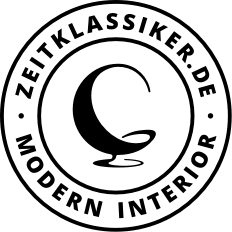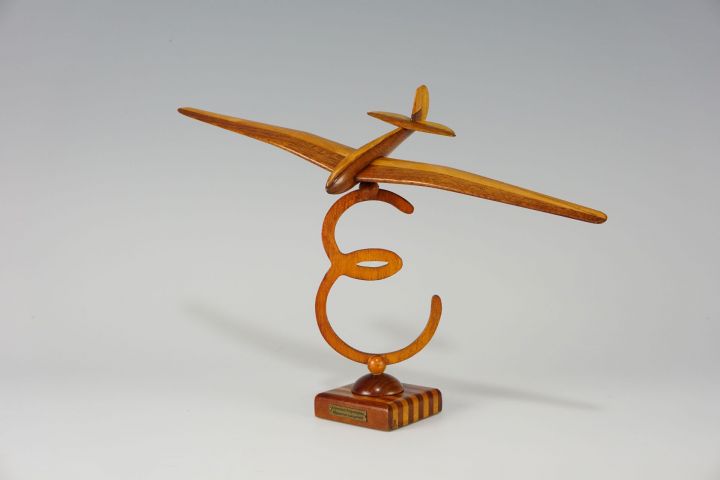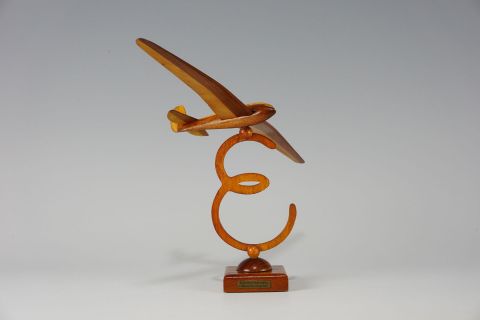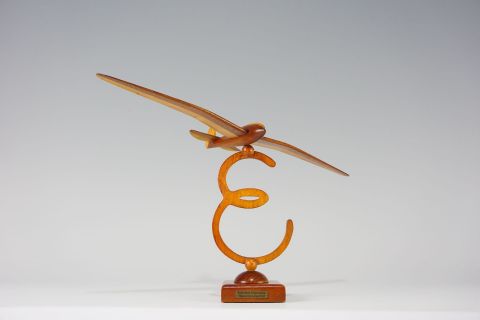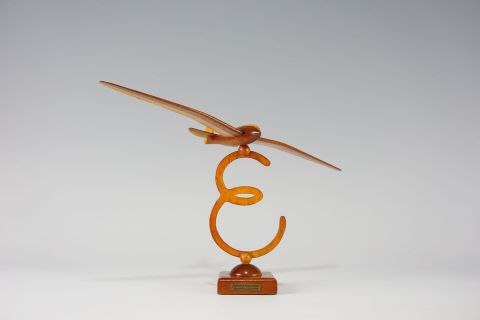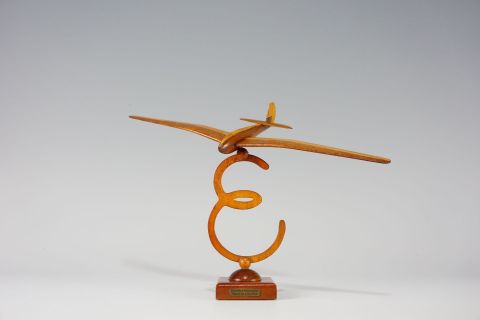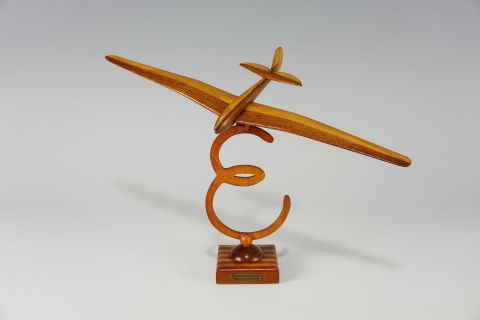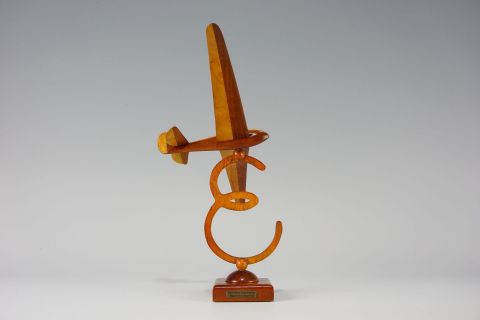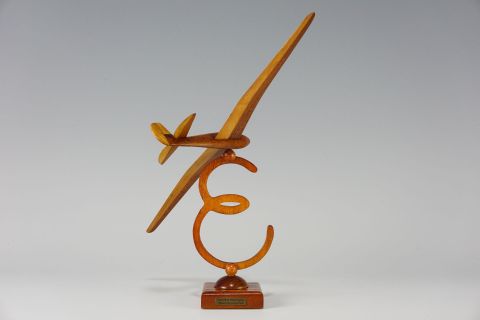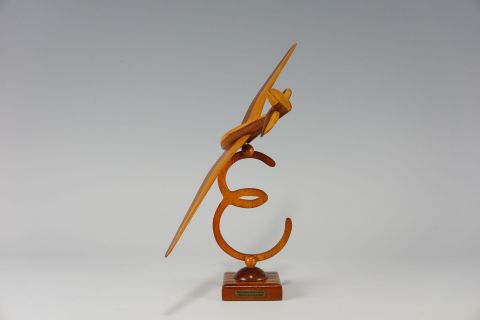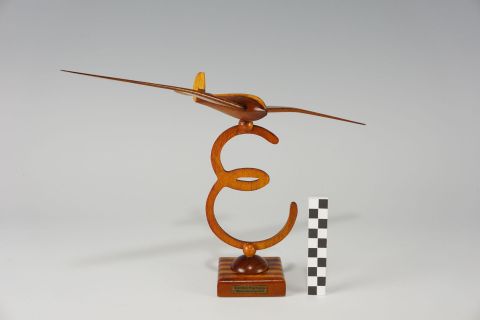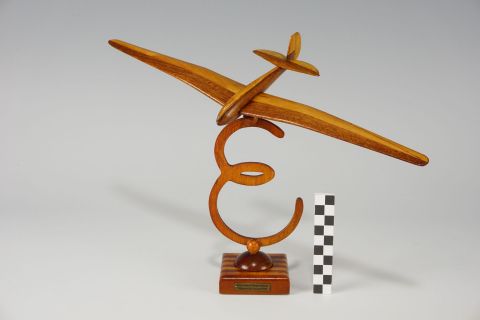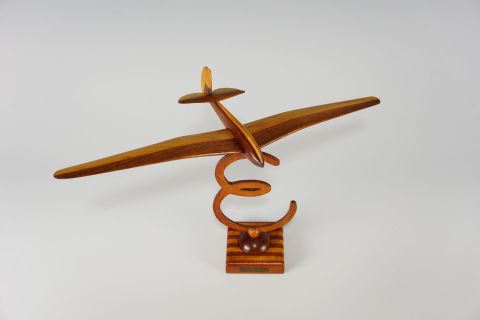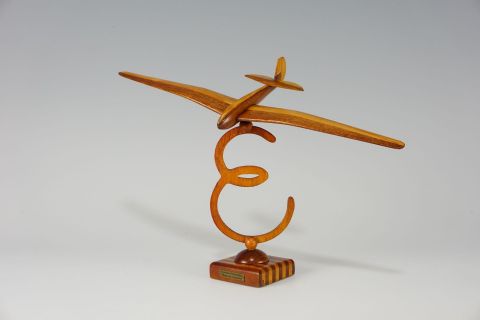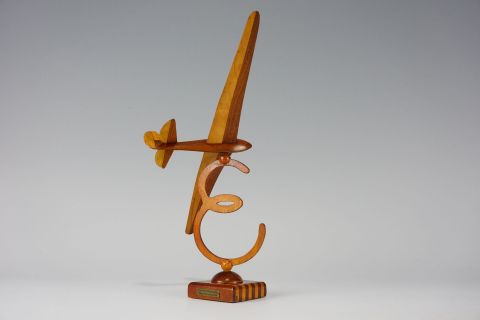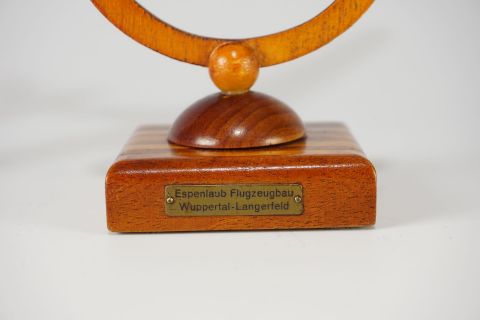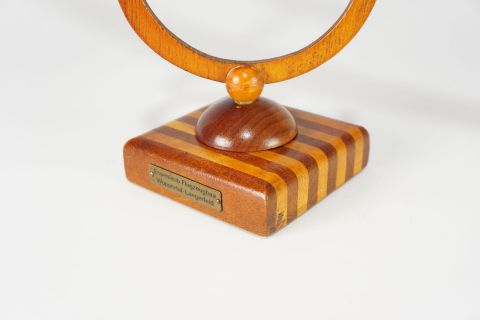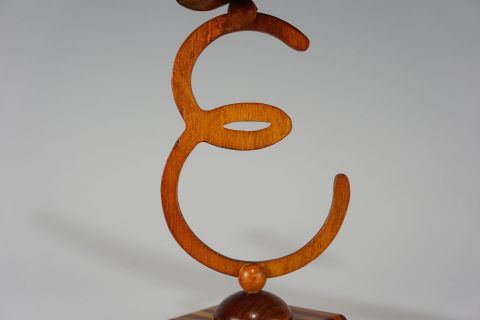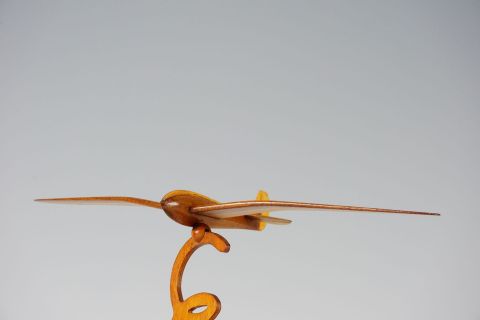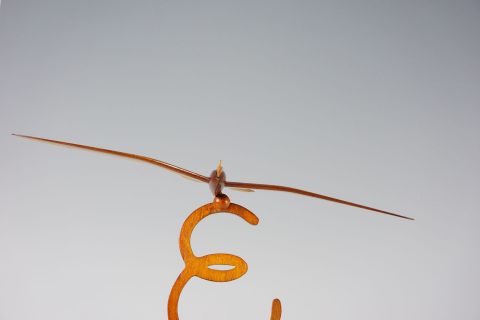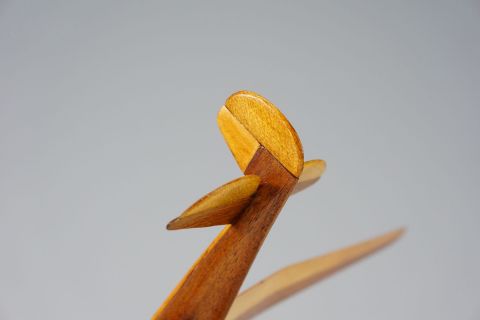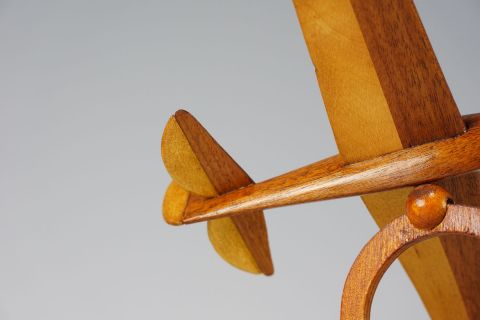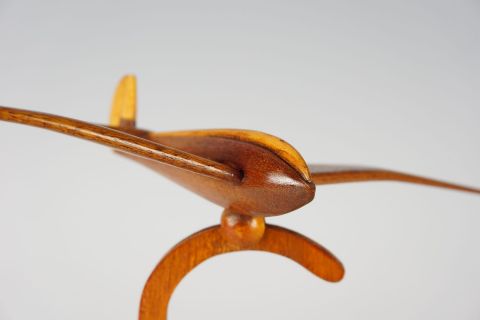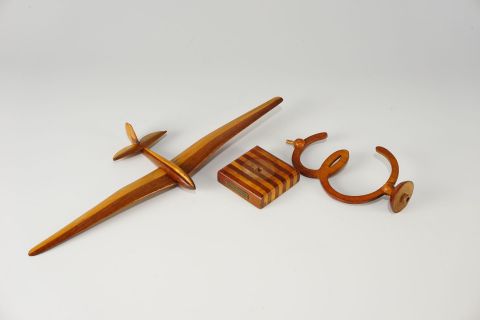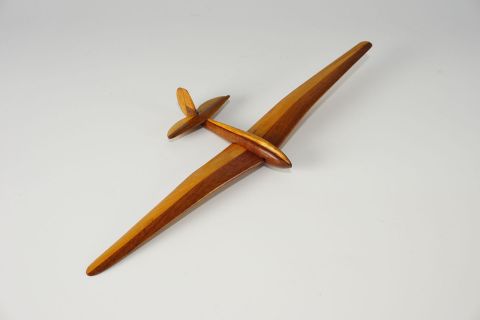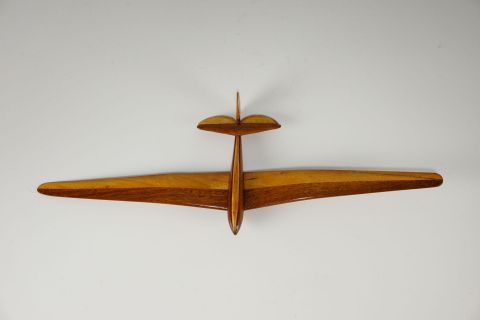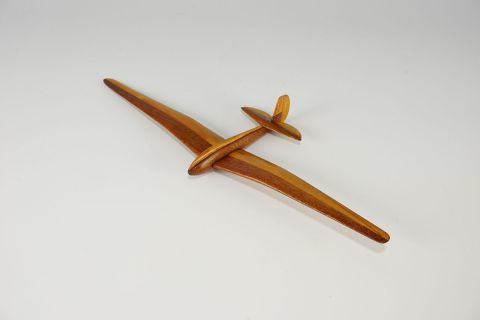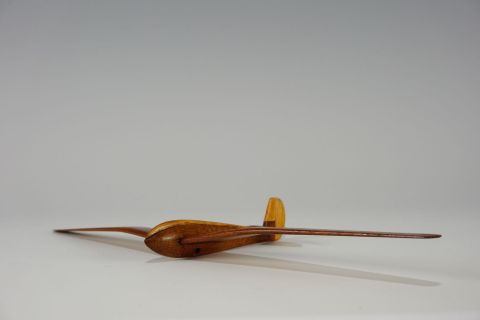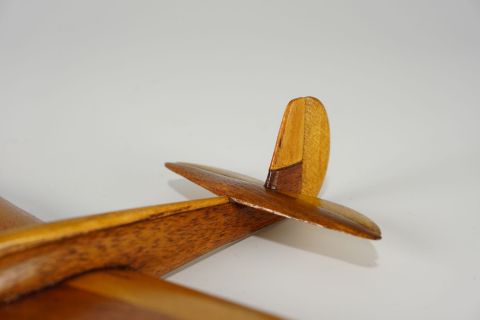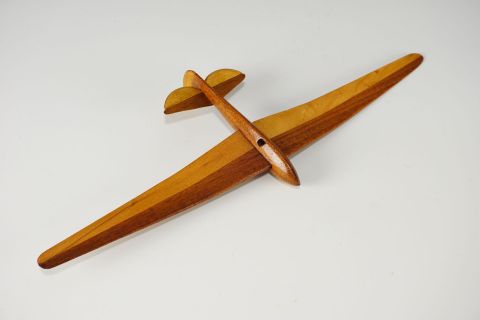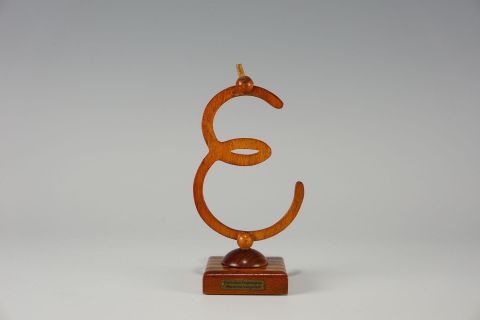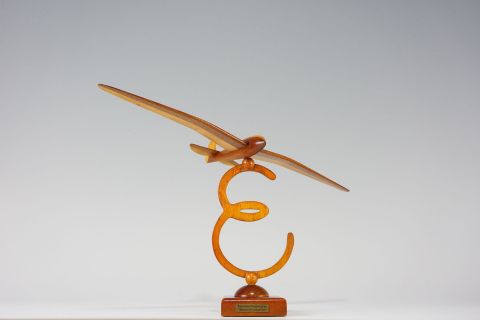Gottlob Espenlaub Streamline Glider 1930s
Gottlob Espenlaub (1900-1972) aircraft glider model - 1930s
Beautiful and extremely elegant wooden table model / presentation model from the 1930s.
Espenlaub aircraft factory in Wuppertal Langenfeld. (Espenlaub Flugzeugbau in Wuppertal Langenfeld /Germany).
Short biography of Gottlob Espenlaub:
Gottlob Espenlaub was one of those brilliant designers and engineers who constructed a lot, but unfortunately never achieved the public appreciation that would have been appropriate and is therefore unknown today except to those familiar with aircraft and vehicle construction.
He was an aircraft pioneer in the fields of gliding, aerodynamics, aircraft design and lightweight construction.
Streamline design in aircraft and automobile design was his field of activity.
He also experimented with rocket propulsion on airplanes, which gave him the nickname rocket man.
In the 1920s, a professional and experimental connection with Max Valier, the rocket pioneer, quickly developed in order to combine this knowledge. Through Valier, Espenlaub came to the streamlineconstruction of vehicles such as the Opel Rak2, a racing car designed by Fritz von Opel and other engineers that was equipped with a rocket drive and caused a stir in the 1920s.
In addition, Espenlaub was a daring pilot, so various designs were tested again and again and he knew first hand what needed to be improved or designed differently. He also built a flying wing in the 1920s.
In the 1930s, an aircraft factory was finally opened in Wuppertal Langenfeld, which was also generally involved in the repair of aircraft. This also happened during wartime. After the war, in the late 1940s, when aircraft were no longer allowed to be built, he returned to building streamlined vehicles, as he had done in the 1920s and 1930s. Due to a shortage of materials, individual pieces that looked adventurous but were inspired by lightweight construction and aerodynamics were often created from leftover aircplanes.
A sports car planned for a larger series, which had only the Porsche Pre A 356 as a competitor, could no longer be planned/built from an economic point of view.
So Espenlaub returned to maintaining aircraft.
The flight model shown here comes from the 1930s and wonderfully reflects the timeless aesthetic of the Espenlaub Glider models.
The delicate lines, the thin, slightly angled wings, the tapered fuselage in a streamlined shape and the rounded rudders at the stern... simply magnificent... plus the beautiful use of two woods/wood colors... pure elegance.
The plane rests, rotatable, on a large cursive script -E, which in turn takes on the beautiful light and darker wood tones as a base. There is a plaque on the base that reads:
Espenlaub Flugzeugbau -Wuppertal Langenfeld
The model can be partially dismantled. The E can be freely rotated/inserted onto the base, and the glider itself can also be positioned depending on the visual preference. So it flies horizontally, as well as in turns, steeps and descents.
Wingspan: 37 cm
Height depending on setting: ~ 33 cm
Length: 14cm
Base: 7cm x 7cm
The black/white scale is 10x2 cm
Very nice and good condition.
A very rare exhibit.
